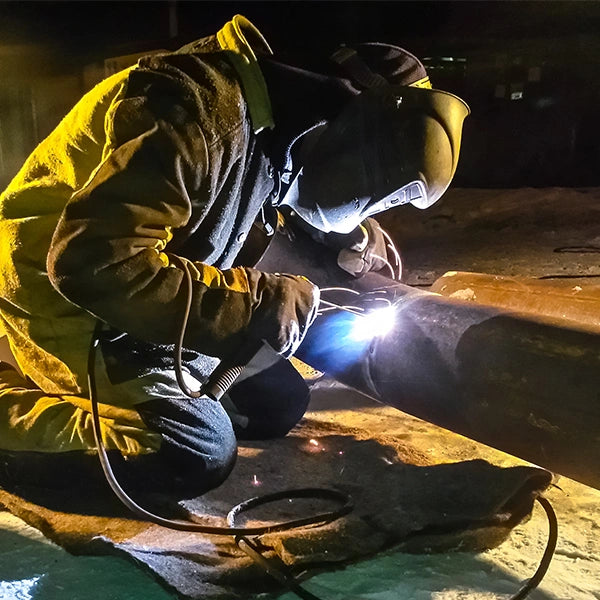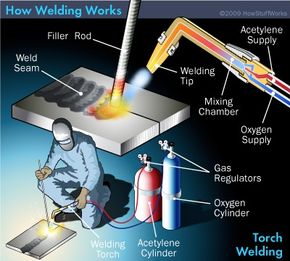Advanced Welding WPS: Tailoring Specifications for Facility Tasks
Advanced Welding WPS: Tailoring Specifications for Facility Tasks
Blog Article
The Ultimate Overview to Welding WPS Procedures: A Detailed Summary for Welders
In the intricate world of welding, Welding Procedure Specs (WPS) function as the foundation of making sure high quality, consistency, and safety and security in welding operations. Understanding the nuances of producing, applying, and checking WPS treatments is vital for welders looking to elevate their craft and fulfill industry criteria. As we explore the numerous components of a WPS and check out the details of qualification and certification, we will discover the crucial duty these procedures play in the world of welding. Allow's embark on a journey to unravel the intricacies and relevance of WPS treatments in welding practices.
Relevance of WPS Procedures
Comprehending the relevance of Welding Treatment Specifications (WPS) procedures is crucial for ensuring the quality and honesty of welded structures. WPS treatments work as a roadmap for welders, laying out the needed steps, parameters, and products needed to achieve an audio weld. By sticking to WPS standards, welders can guarantee consistency in their work, bring about structurally sound and reputable welds.
One of the main reasons why WPS procedures are essential is their function in preserving weld top quality and stability. Complying with the specified welding parameters and techniques described in the WPS aids prevent flaws such as porosity, cracking, or incomplete fusion, which can compromise the toughness and sturdiness of the weld.

Elements of a WPS
A Welding Treatment Spec (WPS) generally comprises essential elements that detail the particular requirements for implementing a weld, making certain consistency and high quality in the welding process. The key parts of a WPS consist of vital variables such as base steels, filler metals, interpass and preheat temperature levels, welding processes, protecting gases, welding positions, and post-weld warmth therapy needs.
Base steels refer to the products being signed up with, while filler metals are made use of to fill up the space in between the base steels during welding. The welding procedure outlines the specific strategy to be used, whether it's gas steel arc welding (GMAW), protected steel arc welding (SMAW), or another approach. Welding settings define the orientations in which welding can be performed.

Credentials and Qualification
Having developed the vital components of a Welding Procedure Spec (WPS), the focus currently shifts towards the vital elements of qualification and certification in welding practices.

Certification, on the other hand, is the official recognition of a welder's credentials by a relevant qualification body or organization. Welding qualifications are normally based on the particular welding processes, products, and positions a welder is qualified to deal with. Holding a legitimate welding qualification shows that a welder fulfills industry standards and is skilled to perform welding jobs to the required specifications.
Producing a WPS
To create a Welding Procedure Requirements (WPS) that fulfills industry requirements, mindful factor to consider of welding procedures, products, and operational criteria is crucial (welding WPS). The initial step in creating a WPS is to identify the welding process to be utilized, such as gas metal arc welding (GMAW) or secured metal arc welding (SMAW) Once the welding process is established, the next essential visit this page element is choosing the ideal materials, thinking about factors like base steel type, density, and joint design. Functional parameters such as welding present, voltage, traveling rate, and securing gas structure need to likewise be meticulously defined in the WPS.

Applying and Keeping Track Of WPS
Upon settling the comprehensive Welding Treatment Specification (WPS) that thoroughly details welding procedures, materials, functional parameters, and top quality assurance steps, the original site emphasis shifts to properly executing and monitoring the established treatments. Execution includes making certain that More Bonuses all welders included in the task are acquainted with the WPS and follow it meticulously during the welding procedure. Effective application and monitoring of the WPS are important for guaranteeing the honesty, stamina, and safety and security of the bonded joints, inevitably contributing to the general success of the welding job.
Verdict
Finally, understanding and following Welding Procedure Specifications (WPS) is vital for welders to ensure high quality, uniformity, and safety and security in their work. By understanding the parts of a WPS, getting appropriate qualifications and certifications, producing in-depth procedures, and carrying out and checking them properly, welders can enhance their skills and proficiency in welding techniques. Sticking to WPS procedures is important for creating high-grade welds and meeting industry standards.
In the elaborate globe of welding, Welding Treatment Requirements (WPS) serve as the backbone of guaranteeing high quality, uniformity, and safety and security in welding operations. The welding process details the certain strategy to be used, whether it's gas metal arc welding (GMAW), shielded metal arc welding (SMAW), or another technique.To create a Welding Treatment Spec (WPS) that fulfills market requirements, cautious consideration of welding procedures, products, and functional specifications is important. The first step in developing a WPS is to recognize the welding procedure to be made use of, such as gas steel arc welding (GMAW) or shielded metal arc welding (SMAW)Upon finalizing the thorough Welding Treatment Specification (WPS) that diligently information welding procedures, products, operational criteria, and quality assurance actions, the emphasis changes to successfully carrying out and keeping track of the well-known procedures.
Report this page